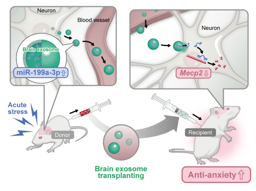Exploring the drivers, lived experiences, and solutions to energy and transport poverty
Published in Earth & Environment

The winter of 2022-2023 has seen a sharp increase in energy prices and as a result, millions more households in Europe are struggling to pay their energy bills, to keep warm at home or cook a hot meal. The cost-of-living crisis has also meant that transport costs have increased, making essential journeys such as getting to work or a place of study increasingly unaffordable for many. When people struggle to afford necessary energy and transport services, such as comfortable temperatures or hot water at home or accessible and affordable means of transport, they are facing a “double energy vulnerability”[i].
Double energy vulnerability can be deeply harmful to health and well-being, and further entrench disadvantage. For example, those who are unable to afford their energy bills may be forced to cut back on their heating use, with cold homes exacerbating health conditions and encouraging the growth of indoor mould. This can also then impact other areas of life, leading to cut backs on other essential expenses such as food, clothing and leisure.
Our research, funded by the Centre for Research into Energy Demand Solutions (CREDS), studied the drivers and lived experiences of, and potential solutions to, energy and transport poverty in the United Kingdom. We chose the UK as our focus as energy and transport poverty are particularly acute there, with an estimated 6.7 million households in energy poverty in October 2022, a sharp increase from 4.5 million households in October 2021.[ii] While the UK does not have an official transport poverty definition, many cities in the UK have noted a trend to this tune and introduced for example capped bus fares during this winter.
We interviewed 42 experts, drawing on a database of about 200 cross-sectoral contacts, and held 8 focus groups with 49 members of the public in each of the devolved nations of England, Wales, Scotland and Northern Ireland. We asked people about their own experiences of affording their energy and transport costs, then sought their views on a set of national policies that might help address energy and transport poverty. We wanted to see how the expert stakeholders compared to the public views in terms of their policy preferences. These included for example requiring landlords to improve energy efficiency of homes, expanding existing schemes of financial support on energy bills so that more people are eligible, and providing more bus routes as well as cheaper and simpler public transport tickets.
Several of the focus group participants were already struggling to afford their transport and energy costs. Among the others, there was nonetheless a strong feeling of “this could be me” – a belief that they, and the majority of the UK population, were at risk of experiencing energy and transport poverty at some stage in the future. This was particularly striking because the participants were screened to be nationally representative (rather than always be in energy and transport poverty).
There was a widespread belief that the recent rises in energy and fuel prices were so severe that large swathes of the population were being made vulnerable. At the same time, those living in rural areas were also identified as being in especially precarious circumstances from an energy and transport poverty perspective, due to their lack of access to gas heating networks or reliable public transport.
In terms of policy solutions, we asked the focus group participants and expert stakeholders to “rank” 12 policy solutions – 6 relating to energy poverty, and 6 to transport poverty – and to evaluate their strengths and weaknesses. Despite their differing level of knowledge and experience, the public and expert participants broadly agreed in several respects. Both groups were supportive of requirements to improve energy efficiency and insulation in the private rental sector and in new-build homes, expanding the provision of public transport and making it more affordable, and offering income supplementation or energy bill discounts to those struggling to afford energy costs. The public participants generally felt that the eligibility criteria for income supplementation should be set relatively broadly, so that a large section of the population could receive financial support.
The public were, however, more positive about the value of electric vehicles and charging points than expert stakeholders. The expert stakeholders were more explicit about the need to address underlying inequalities in incomes and the importance of inclusivity going forward, to ensure that low-carbon innovations and measures are accessible to lower income households in terms of information and cost.
Interestingly, neither the public nor expert participants were wholly convinced by the specific policy options we presented. Many of the expert stakeholders, and some public participants, argued that there is a need for more ambitious, fundamental changes. Options that were mentioned here included Universal Basic Income and/or Universal Basic Services, policies to reduce car dependency, and widespread adoption of micro-renewables such as solar panels. Although currently UK policy on energy and transport poverty is arguably somewhat reformist, our findings indicate that there is ample public support for more extensive and fundamental changes.
Debates on low-carbon transitions increasingly pay attention to questions of justice and equity, and how the costs of changes such as improving the energy efficiency of homes or electric vehicles ought to be distributed across society. Our research provides evidence to those debates, by showing that public and expert support for low-carbon policies are influenced by whether such policies are perceived to be “just” – specifically, whether they prioritise and are beneficial to those struggling to meet their basic needs. The favoured policy options of our public and expert participants (mandatory energy efficiency requirements for landlords, expanding financial assistance, cheaper bus and train fares and expanding bus services) could provide useful first steps in future policy to address double energy vulnerability.
[i] Simcock, N., Jenkins, K.E.H., Lacey-Barnacle, M., Martiskainen, M., Mattioli, G., Hopkins, D. 2021. Identifying double energy vulnerability: A systematic and narrative review of groups at-risk of energy and transport poverty in the global north. Energy Research & Social Science, 82, 102351. https://doi.org/10.1016/j.erss.2021.102351.
[ii] NEA. 2022. The hardest hit: Impact of the energy crisis. UK Fuel Poverty Monitor 2021-2022. National Energy Action. Online: https://www.nea.org.uk/wp-content/uploads/2023/01/3830_NEA_Fuel-Poverty-Monitor-Report-2022_V2-1.pdf [Accessed 30.01.2023].
Follow the Topic
-
Nature Energy

Publishing monthly, this journal is dedicated to exploring all aspects of this on-going discussion, from the generation and storage of energy, to its distribution and management, the needs and demands of the different actors, and the impacts that energy technologies and policies have on societies.
Related Collections
With Collections, you can get published faster and increase your visibility.
Microgrids and Distributed Energy Systems
Publishing Model: Hybrid
Deadline: Mar 31, 2026




Please sign in or register for FREE
If you are a registered user on Research Communities by Springer Nature, please sign in